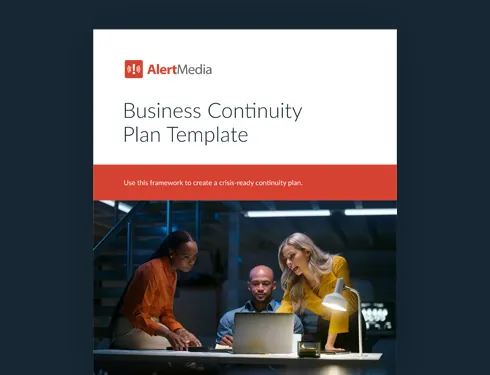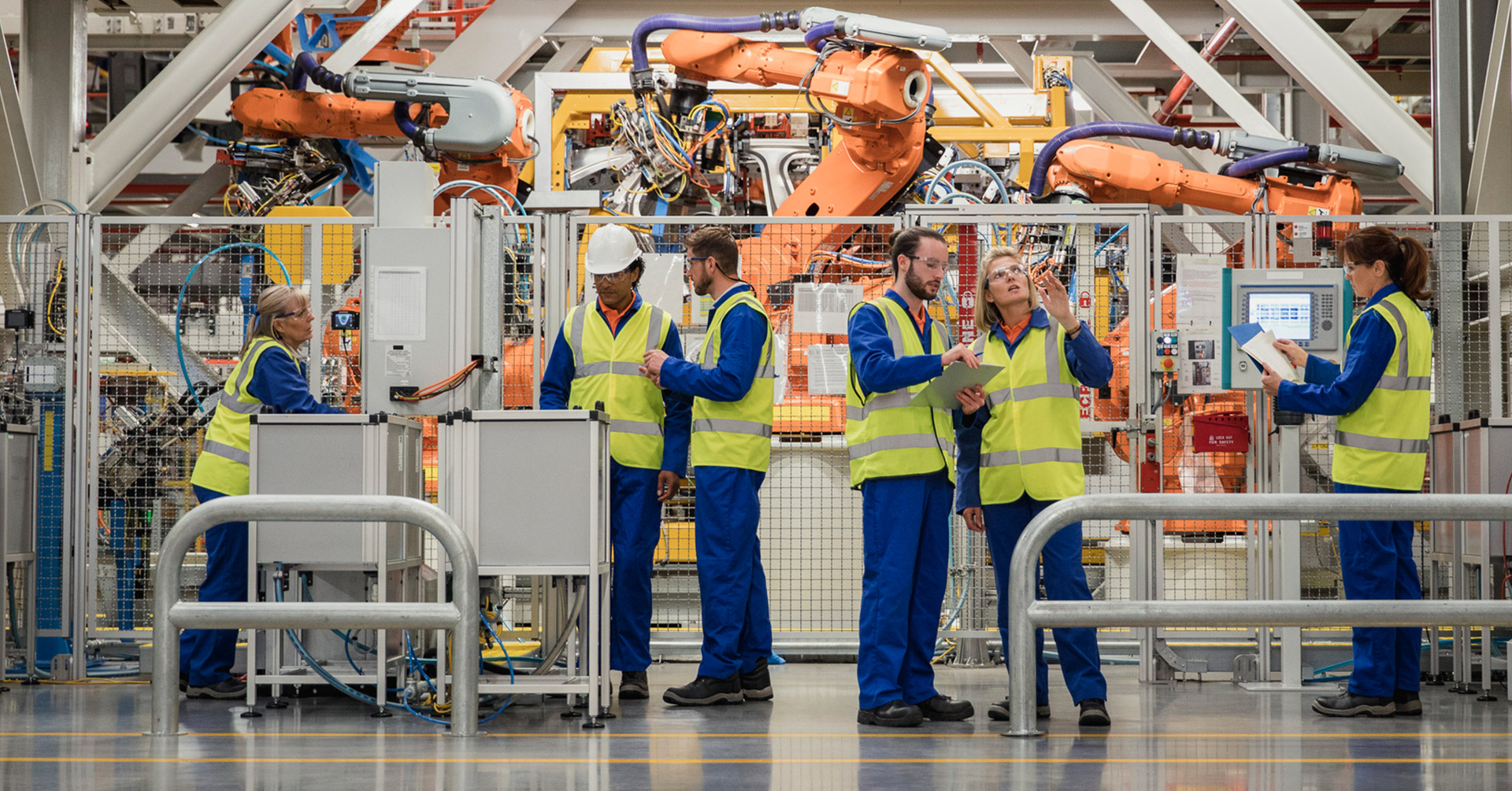
5 Steps to Disaster Preparedness for Your Business
Learn about how adopting a holistic approach to disaster preparedness can help keep your employees safe and your business up and running when faced with a crisis.

If you took the time to think it through, chances are you’ve been preparing for small emergencies all your life. Do you have a smoke detector? A home alarm system? Airbags in your car? A spare tire? All things you hope you won’t need, but you’re grateful they’re there. Even more grateful when they prevent a bad situation from getting worse.
Though you might be changing the smoke detector batteries without a second thought, you’re practicing the very important skill of emergency preparedness. This same skill is just as important, if not more so, when we consider large-scale emergencies and disasters like wildfires or hurricanes. The stakes are higher, and the costs are higher—both the devastating cost to human life and the burden of disaster recovery.
A 2020 Federal Emergency Management Agency (FEMA) survey showed that Americans are becoming more concerned with preparedness. More than ever before, families are building emergency kits, arming themselves with information, and creating emergency plans. But having a disaster preparedness plan is just as important for businesses as it is for households. So don’t get stuck thinking would have, could have, should have—get a plan in place.
In this article, we’ll explore the various aspects of disaster preparedness, the difference between disaster preparedness and recovery, and five steps you can take to prepare your business—before the next disaster strikes.
Business Continuity Plan Template
What Is Disaster Preparedness?
FEMA defines disaster preparedness as “a continuous cycle of planning, organizing, training, equipping, exercising, evaluating, and taking corrective action in an effort to ensure effective coordination during incident response.” Put more simply, disaster preparedness is planning for the worst so that you can respond effectively in the face of an emergency.
The list of potential emergencies is long and includes both man-made and natural disasters—anything from power outages to active shooters to severe weather. Thinking about and attempting to develop tailored response plans for such a wide range of potential emergencies can be overwhelming, which is why many organizations instead adopt an “all-hazards approach.” Having a plan is the first step towards managing those anxieties and mitigating risk to your people and your business.
Of course, depending on the emergency you’ll need to adjust your approach, so a good disaster preparedness plan allows for flexibility. For instance, massive flooding often requires evacuation, while a pandemic may require a remote work plan or a workplace vaccination policy. Preparing for a power outage might include plans for heating and cooling your office buildings or ensuring there are enough generators to sustain operations. Having important contact information on hand, like the phone number for the Poison Control Center, is invaluable in the case of chemical emergencies.
Other things to keep in mind when building an emergency response plan include accessibility considerations for employees with special needs. Employees with families and pets should also be encouraged to formulate a plan for their families. Especially in the event they are away from home at the time of emergency, they’ll feel more comfortable knowing their loved ones are safe.
Disaster Preparedness vs. Disaster Recovery
If disaster preparedness is getting ready for a potential emergency, disaster recovery is the response to that emergency. FEMA, Red Cross, and first responders are usually on the scene providing assistance to communities in need. Evacuating people, mitigating further risks, and providing first aid to the injured or ill is usually their first priority. In the longer term, disaster recovery might involve clearing roads, rebuilding homes, or reinvigorating a struggling economy.
While they are two separate things, preparedness and recovery are closely linked. Emergency management and recovery is driven by preparation. The better a community prepares, the better recovery goes. Community resilience depends on this.
New Orleans is known for many things, including, unfortunately, disaster preparedness and recovery. Back in 2005 Hurricane Katrina left at least 15 million people suffering—80 percent of New Orleans was underwater, thousands of people died, at least one million jobs were affected, and $81 billion of property was damaged. Those numbers translate to real lives, homes, and communities that suffered physically, psychologically, and financially.
After the hurricane, $14.5 billion federal dollars went into fortifying the levees that protect the city. Though the recent Hurricane Ida differed in some ways from Katrina, it was still one of the most powerful storms in Louisiana history. After the hurricane, Louisianans dealt with flooding and power outages. But thankfully, due in part to the levees, the loss of life and property was nowhere near as severe as the 2005 storm. Preparation paid off.
Disaster preparation reduces the overall cost of disasters, both in terms of finances and the cost to human life. Committing to disaster preparation is an investment in disaster recovery, and an investment in a stronger, safer organization.
How to Prepare Your Business for a Disaster
If you’ve ever made an emergency response plan for yourself, you’ll know the basics of preparation. What you might not know, though, is how to build those plans to suit the needs of your business. There is much to consider—especially since disasters often come with no warning.
Employees could be at home, at work, or traveling when they occur. How will you reach your people and ensure they are safe? What operations should continue in the face of disaster? What supplies are needed to keep things running as smoothly as possible? How will you communicate vital information to everyone on your team? Consider using a disaster recovery plan checklist to begin your disaster recovery planning process that will guide your business through establishing robust protocols to protect assets, data, and operational continuity.
Here are five steps to get you started:
1. Assess for risk
When developing a disaster preparedness plan, everyone involved in disaster planning should first sit down and consider what types of emergencies are most likely to occur in the regions where employees are located.
Some emergencies are more common in certain geographical areas—like wildfires in California, or hurricanes by the coast. Make the most detailed plans for the highest-risk situations in your area. Doing a threat assessment can help you determine what you are most at risk for.
Other hazards might be company-specific. If you’re working in healthcare, the coronavirus pandemic is currently a significant hazard. If you’re in the tech business, things like IT outages or cyber-hacking threats are more prevalent concerns. Look at what your business does, and adjust your emergency plan to address its unique needs.
2. Make a plan
As we’ve seen, the importance of preparation cannot be overstated. Once you know what sort of emergencies you’ll need to plan for, formulate those plans. This guide can help.
Roles and responsibilities for emergency response should be assigned to members of the preparedness team. Someone might be in charge of facility management, for example, and someone else might be responsible for employee communication. You’ll want to clearly identify what action items are needed to keep people safe and, if necessary, what business operations need to continue.
Have a system in place for how you’ll communicate with employees during an emergency, whether they’re at work or at home. There should be procedures in place to do so quickly—time is of the essence when lives are on the line. Keep your employees informed with real-time updates—and use a two-way communications system to ensure employees always have a way to reach you too.
3. Gather supplies
What supplies will you need to keep employees safe and healthy? Necessary emergency supplies should be purchased if employees might be stranded at the office. Generators, first aid kits, and bottled water are always good to have available. Having a store of prepackaged or nonperishable foods is never a bad idea.
Other supplies might vary, depending on the hazard your company is mitigating. For instance, hospitals fighting coronavirus continue to stock up on personal protective equipment like masks and face shields.
You’ll also want to consider what your business will need to keep things running in the event of an emergency. Perhaps your office is in a region that gets icy in the winter. If there was a snowstorm, do employees have the technology they need to work from home?
4. Educate
Practice, practice, practice. Practice whatever is possible, as much as possible. Emergency drills and tabletop exercises help prepare people for what actions to take in an emergency. Meeting at evacuation points, like during a fire drill, will make responding to emergencies less overwhelming in the future. Have employees practice using the fire extinguisher. If you live in an area that experiences earthquakes or tornados, make sure everyone knows how to get to a safe location.
Classes and webinars are useful ways to disseminate your company’s disaster preparedness plan. Time spent on education helps address employee questions and smooth out any kinks in the plan. Social media is also a good place to keep employees engaged and up to date with disaster planning.
5. Stay informed
You never know when the next disaster will strike. Using an emergency communication solution with integrated threat intelligence will help your business and its employees receive advance warnings of danger. The same way an Amber Alert buzzes on everyone’s cell phone at once, threat notifications can disperse information quickly to many people, across multiple communication channels, all at the same time.
Being immediately notified of emerging threats is invaluable. The sooner you know of a threat, the sooner you can activate your emergency response plan. And the more you know ahead of time, the better prepared you and your business will be to face an oncoming threat.
The Importance of Preparation and Communication
No matter what industry you are in, creating a disaster preparedness plan can make a huge difference to your employees’ safety and your peace of mind. Better to have a smoke alarm and never need it than to be sleeping unawares through an emergency. In the face of any potential emergency, it’s always better to be prepared than to be caught in a dangerous situation and unsure what to do next. Preparation saves lives, homes, businesses, time, and money.
Preparation is nothing if there is no way to communicate your plans to people who need to know them. With a strong disaster preparedness plan supported by modern emergency communication technology, your people will be ready for any emergency that may come their way. In the face of fire, flood, illness, or any other disaster, a robust emergency communication plan can keep your people informed—and keep your people safe.




